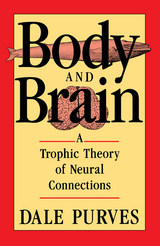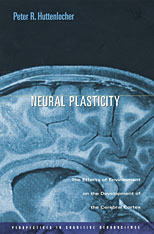
The major goal of developmental neurobiology is to understand how the nervous system is put together. A central theme that has emerged from research in this field over the last several decades is the crucial role of trophic interactions in neural assembly, and indeed throughout an animal's life. Trophic—which means nutritive—refers to long-term interdependencies between nerve cells and the cells they innervate.
The theory of trophic effects presented in this book offers an explanation of how the vertebrate nervous system is related to—and regulated by—the body it serves. The theory rationalizes the nervous system's accommodation, throughout life, to the changing size and form of the body it tenants, indicating the way connections between nerve cells change in response to stimuli as diverse as growth, injury, experience, and natural selection.
Dale Purves, a leading neurobiologist best known for his work on the formation and maintenance of synaptic connections, presents this theory within the historical setting of earlier ideas about neural organization—from Weiss's theory of functional reorganization to the chemoaffinity theory championed by Sperry. In addition to illuminating eighty years of work on trophic interactions, this book asks its own compelling questions: Are trophic interactions characteristic of all animals or only of those with complex nervous systems? Are trophic interactions related to learning? What does the trophic theory of neural connections imply about the currently fashionable view that the nervous system operates according to Darwinian principles?
Purves lays the theoretical foundation for practical exploration of trophic interactions as they apply to neural connections, a pursuit that will help us understand how our own nervous systems generate change. The ideas in this book not only enrich neurobiology but also convey the profound relevance of neuroscience to other fields of life science.

Neural plasticity--the brain's ability to change in response to normal developmental processes, experience, and injury--is a critically important phenomenon for both neuroscience and psychology. Increasing evidence about the extent of plasticity--long past the supposedly critical first three years--has recently emerged. Neural Plasticity offers the first succinct and lucid integration of this research and its implications.
Pointing out the negative and the positive consequences of plasticity, Peter Huttenlocher describes plasticity in children and adults (in normal aging and in response to trauma), in sensory systems, the motor cortex, higher cortical functions, and language development, proceeding system by system, and paying particular attention to the cerebral cortex. One of the book's strengths is its range of references, not only to studies on human subjects but to the experimental study of animal models as well. This book will be a unique contribution to research and to the literature on clinical neuroscience.
READERS
Browse our collection.
PUBLISHERS
See BiblioVault's publisher services.
STUDENT SERVICES
Files for college accessibility offices.
UChicago Accessibility Resources
home | accessibility | search | about | contact us
BiblioVault ® 2001 - 2024
The University of Chicago Press









